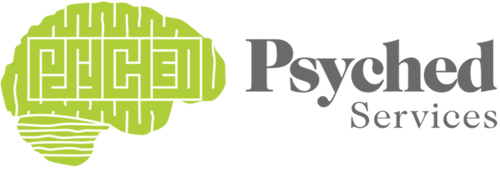School-based mental health programs: How the Safer Communities Act is making an impact

How systems work — and who they serve — is just as important as where money flows
Among the many ways elected officials have responded to renewed attention on student mental health has been to increase the amount of funding available to tackle problems both in and outside of school.
But many district leaders still find themselves stuck. Even if the influx of fresh funding from the Safer Communities Act is helping them for now, some cannot help but wonder what happens when, in budget-speak, things return to “normal.” Others may feel overwhelmed by the sheer scale of difficulties their students face, and are asking exactly how they should spread the new funding in the most effective and indeed equitable ways.
Our team at Psyched Services, having both the curiosity for different ways of doing things that informs an innovative service model, and collective decades under our belts working closely with school districts and their directors, can offer some perspective on this.
Most of what we present here has been drawn from extensive conversations with school directors themselves, many of whom have used project-based services like the ones we offer to plug gaps, and others of whom we have spoken to in the hope of learning their lessons and aspirations for education in the post-COVID era.
Why do we need school-based mental health funding?
In the United States today, as many as 14 million children and youth under 17 have been diagnosed with anxiety, behavior difficulties or depression, in estimates compiled by the CDC before the COVID-19 pandemic set in and triggered academic setbacks and psychological distress in millions more students.
Behind alarming statistics that may only be scratching the surface, every parent, school psychologist, and educator seems to know at least one student who emerged from the worst of the pandemic having significantly changed — if those students are not their own children.
It’s accurate to describe the situation as a crisis. Arguably, the goal is not so much to put out current fires exclusively, as to engage in deeper, sustainable and more flexible prevention measures.
What the rules say you can use SCA funding for
Federal guidance
At the federal level, guidance indicates that money from the School-Based Mental Health Services Grant Program, or “SBMH grants” for short, can be used to boost staffing, increasing the number of credentialed service providers who deliver school-based mental health services in spaces with demonstrated need. There is a tranche of $144 million each year for the next five years, with the federal government indicating an average award size of $1.75 million, and up to $3 million per annum. Just over 100 of these awards were made available.
Alternatively, the Mental Health Service Professional Demonstration Grant Program offers grants to support the “insufficient supply of school-based mental health professionals to meet the needs of students.” The average award size is $800,000, and up to $1.2 million, with 250 of these awards made available beginning in fall 2022.
State guidance: California
At the state level, California guidance can be used as an example. Programs, generally speaking, must safeguard against mental illness from becoming “severe and disabling” for students, improve outreach, reduce discrimination and stigma, and prevent negative outcomes in the population targeted by the project. Proposed use of public funding needs to be outlined clearly, and among other things, the partners in a project have to prove how they can provide services after grant funding has been exhausted.
Across the United States, there is a similar focus on suicide prevention, outreach to high-risk children and youth, additional support for LGBTQIA2+ youth, and more.
Sample project that SCA funding is being used for
In San Mateo County, California, SCA funds were tapped to access a $6 million grant to address social-emotional learning and resiliency-building in 12 local school districts, and specialized on-site behavioral health services in four school districts there.
Directors: What can you do to extend the funding’s impact?
How can the most students benefit from resources? Directors have more resources, but the money is still finite. Designing programs in a way that maximizes the impact in terms of services per the largest number of students is highly child-focused, and very effective.
Consider that in the model of Multi-tier Systems of Support (MTSS), Tier 1 supports are cost-effective in the short term and long term, and more far-reaching. While every level of intervention should receive funding, an ounce of prevention is worth a pound of cure.
School-based mental health funding is for the whole child, and for every child. The pandemic reminded us that any student can be affected by mental illness, and too often, the signs go unseen or are overlooked.
It is an ethical imperative for ensuring children are well, and that as students, they are fully capable of participating in their education at the developmentally appropriate level. Indeed, just as when children are well-fed they are more amenable to learning (a big reason behind access to school breakfast and lunch), emotionally and mentally healthy children are more successful and achievement-oriented as students.
It ensures compliance with both state and federal laws, as well as recommendations and official guidance from school psychology organizations, pediatricians, and public health bodies.
The guidance here is general by necessity. If you have questions about the advice below once you have read it or want to know if our support services can help you effectively implement your new funding tranche in the longer-term, reach out to us for a consultation.





